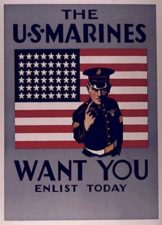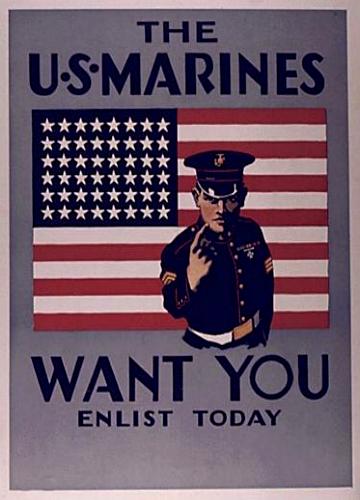There are many facets to a robust recruiting strategy. It should take into account the business needs, the organizational culture and finding the most qualified employees. These are the tenets that are widely accepted as some of the most important when determining your strategy. From there, recruiters attempt to find the candidates who are qualified for the open positions. The candidates come in to interview and give us their best sales pitch on why we should hire them. Then, the recruiter, hiring manager, and any other important players pitch why the company is so great.
This is the step where many organizations fall down. In our zeal to get the candidate on board, we throw out every possible reason the company is great in hope that something will resonate with our strongest candidate. It’s a bit like throwing a bunch of darts at the dartboard. You may hit the bulls-eye, but maybe not. By employing a more tactical approach to the close, recruiters can have greater success in reeling in the strongest candidates while also determining the “fit” of that candidate.
US Marnie Corp- Targeted Tactics
 The US Marine Corp has a method to do this that may not be well-known, but works quite successfully in accomplishing this targeted recruiting message. They use what they call “benefit tags”. When a Marine Corp recruiter has a candidate in front of him (or her), they lay these benefit tags out on the table in front of the candidate. Each tag has a word or phrase with either a tangible or intangible benefit.
The US Marine Corp has a method to do this that may not be well-known, but works quite successfully in accomplishing this targeted recruiting message. They use what they call “benefit tags”. When a Marine Corp recruiter has a candidate in front of him (or her), they lay these benefit tags out on the table in front of the candidate. Each tag has a word or phrase with either a tangible or intangible benefit.
The six intangible tags are:
- Challenge
- Pride of Belonging
- Leadership and Management Skills
- Self direction, self reliance, self discipline
- Courage, poise, self confidence
- Professional Development and opportunities
The five tangible tags are:
- Physical fitness
- Technical skills
- Financial security, advancement, and benefits
- Educational opportunities
- Travel and adventure
The candidate is asked to choose the tags that represent what is most important to them in their life and career. The recruiter is prepared with a pitch for each tag, so no matter which tags the candidate chooses, the recruiter has a specific goal of what needs to be communicated. For example, if the candidate chooses “leadership and management skills”, the recruiter may tell them about all the Fortune 500 CEOs who are former Marines. If they choose “travel and adventure” the recruiter may tell them about all the exotic places they can serve their country.
Making it work for your organization
This technique can work in your organization too. By looking at the organization as a whole and what the benefits are, you can come up with your own tags and selling points. Maybe you offer an environment that promotes from within, tuition reimbursement, global offices in 7 countries, and an average tenure of 28 years for employees. It would be easy to have four specific selling tracks that address:
- Advancement opportunities
- Education and Training
- Global travel opportunities
- Job security
By asking each candidate “What is most important to you in your career?” you are demonstrating that your organization values their needs, right from the start. It is a good way to build that trust from day one. If candidates believe they are having their individual needs addressed, I’d predict that it will not only close more deals quickly, but will produce stronger initial engagement with the company.
What do you think? Are you using targeted, individualized recruiting tactics in your organization? Should you? Let’s discuss it in the comments.



9 Comments
Great Post Trish! I think that this workable framework had two clear advantages. First it allows the recruiter to feel well prepared as they have a roadmap of clear key message elements. This increases a recruitment teams chances for promoting the same employment brand with subsequent benefits. Secondly, and to your point, it engages applicants into gaining a better understanding of the culture. That is a win-win.
Garrick
This is very cool and very applicable to any organization. I did not know that about the Marine Corp, by the way. Thanks, Trish!
I’m a fan of targeted recruiting. However, I think that the best recruiters do this naturally.
Ages ago, I attended a training session by Peter Leffkowitz He called this putting your finger in the candidates pain. Once you knew what truly motivated the candidate, then you would use this if they started to want to back out of the job offer, or accept a counter offer to stay.
When you’re having that discussion with the candidate and you go through all the fluff questions, eventually you need to ask why are they really talking to you? My approach was simply “I know I’m not the only game in town. You’re speaking to other companies and recruiters, I would too if I was in your position. But why are you really talking to me? What’s really causing you to seek me out and have this discussion?”
That’s when the pretense dropped and the true discourse started.
Trish –
Great post as well, and I agree with John, that a good recruiting organization or Recruiter does this naturally. They know the industry and candidates pain points and can put together a series of great campaigns to attract the right talent. I think professional organizations like NFL or College Football do a great job at this as well. I wrote a series of blogs on this topic last fall. Check it out at http://www.whitingconsulting.com.
Have a great day!
Best-
Chernee
The use of benefit tags has been validated by recruiter use and primary research conducted annually by the Marine Corps. The values based information has been used to script awareness advertising, web site messages and sales support materials. This information has been used to establish trust (as mentioned earlier), uncover objections, and tailor program offerings. Initiated over twenty years ago, this recruiter created effort now informs all aspects of the Marine Corps Marketing Strategy.
@Mike- Thanks for pointing out that the Marines not only use the benefit tags to tailor the message to the recruit during the discussion, but that it also is apparent in the web messages and other sales materials. I appreciate your comment. Thanks.
The entire USMC Recruiting Training and Recruiting operations ought to be a “best practice’ case study by any civilian recruiting organization; its use of local, regional, national media for recruiting, branding, messaging, benefit tags, leveraging alumni program for recruiting, generational messaging/recruiting (they did this decades ago), systematic recruiting processes, continual recruiting training, recruiting metrics/analysis (while corporate recruiting still is trying to decide on metrics), recruiting leadership/management, use of internal “proof sources”, lead generation system, development of and use of sphere of influences in communities, diversity initiatives, etc, etc. Its amazing the USMC can pull unwilling Marines out of their infantry jobs and make them into some of the most effective recruiters in the business. Compare selling your organization to selling the Marine Corps which has low pay, minimial benefits, high turnover, possible death, tough living conditions, high travel %, poor work/life balance, advancement not guaranteed, no individuality, etc, etc.